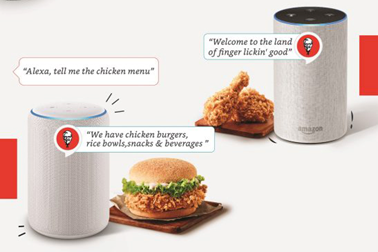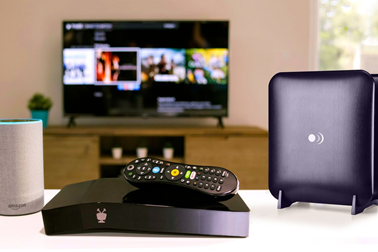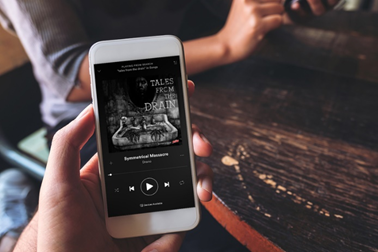Future Trends: Speak and Listen
28 Jan 2020

Welcome to our Future Trends series, part of our 2020 Customer Engagement campaign in collaboration with Paragon Customer Communications, Collinson, dotdigital and partnership with Foresight Factory.
In this article, we will analyse brands voice-strategy and how this channel is destined to become a significant point of interactions between brands and their consumers.
Voice-led search is changing how customers discover brands and products/services and the growing sophistication of smart voice assistants leads consumers to involve these devices at all points on the path-to-purchase.
Many of the significant voice platforms come from American tech giants, including Amazon, Apple, Google and Microsoft. However, APAC and specifically China, are creating parallel systems of voice assistants developed by domestic brands like Alibaba and Xiaomi.
Finally, we will investigate podcasts as a fresh and popular audio media channel to engage consumers. Compelling narratives, engaging storytelling and informative content can strengthen the brand understanding and memory, offering to brands the ultimate prize of a dedicated audience.
The Insights
Chat and Voice
Comparing to last year data, people’s interest in using voice commands to either research (40% in 2018 vs 38% in 2019) or buy products has remained stable (35% in 2018 vs 34% in 2019).
The current usage of voice commands is driven by younger consumers as 53% of customers born between 2002-2010 currently use voice. The interest and usage rates also rise for those on higher incomes, reaching 45% among individuals with a household income above £75k.
While in the past the trend saw a divide between genders, with men more likely to use voice than women, this has evened out and is now evenly split across gender.
Looking at customers who own a smarthome assistant, their number has grown slightly, from 23% in 2018 to 26% in 2019, and the number of customers that have used or is interested in this technology is now about 40%.
Ownership is higher among wealthier consumers and greater among the male population, with 27% of men owning a smart speaker compared to 22% of women.
Data also reveals millennials as more likely to own a smarthome assistant, and ownership is far greater among consumers in the family life-stage.
Despite numbers showing a small increase only 1 in 4 customers actually own a voice assistant, data that might be justified by the high number of people who still feel uncomfortable in using this technology.
Which of the following have you done and which would you be interested in using in the future? And how comfortable are you with using voice assistant technologies made by the following brands in your home?

Podcasts
According to our research, 37% of the British population listen to podcasts at least monthly and the percentage rises to 67% among men aged 16-29 and 54% among households with incomes of £75k+.
However, the most engaged are younger consumers between 16 and 34 years old. They are most likely to be regular podcast listeners, with 14% of this group listening daily and 29% listening several times a week.
How often do you listen to podcast?

The Opportunities
Chat and Voice
From 23% in 2015, the number of UK customers that have used or are interested in using voice commands has risen to 38% in 2019.
Considering the current data, Foresight Factory estimates that the numbers of those who will use voice commands will rise to 42% by 2025, and a further 20% will be interested in using them. Also, the ownership of smarthome assistants will rise to 29%.
The main drivers keeping people’s attention and interest on voice commands seem to be all connected to the customer’s holistic desire to unify their off and online lives as well as all their devices. For instance, interest in using vocal assistants to control household appliances is strong, as well as developing a greater use of social networks and group messaging services.
More specifically, invesigating what the drivers for using smarthome assistant are, we found:
- Own and connect other new tech products, such as wearables and virtual reality headsets
- Control a range of key-tasks, like home appliances, book appointments or transferring money
- Willingness to share their data with companies to improve personalisation
- Desire to stay up-to-date and try new experiences and better services (i.g. next-day delivery service)
Following, a few examples of tasks performed via voice assistants and related differences between genders:
Which of the following, if any, are you interested in using voice assistants (e.g. Siri, Alexa, Cortana, Google Assistant) to do?

For both voice commands and smarthome assistants, another impactful factor is the feeling of time pressure, voice appears to be a quicker way to get what the person needs from the device. In 2017, 43% of British consumers said that they experienced information overload when buying things online.
Connected to the desire of overcoming both being overwhelmed by and time pressure, customers are demanding shortcuts and smarter systems. The ability to connect all vocal assistants is an opportunity that brands shouldn’t miss, avoiding time-consuming and unnecessary task repetition from having to traverse these separate ecosystems.
At the beginning of 2018, we saw Microsoft’s Cortana partner with Amazon and also being willing to collaborate with Google. Rather than competing for the digital assistant battle, Microsoft chose to make Cortana “a valuable skill that somebody who is using Alexa can call’ as Satya Nadella, CEO at Microsoft, explained. The question is whether the future these assistants is in allowing customers to seamlessly move across platforms or not.
Podcasts
The research suggests that podcasts are an effective channel to engage customers with brands and their advertising.
27% of weekly podcasts listeners agree they have discovered new brands through podcasts advertising, against 10% of customers who don’t listen to this media and the majority (59%) find marketing they hear via podcasts/radio relevant.
Moreover, 57% of those listening at least once a week declared to trust marketing messages they receive via this channel. Podcast listeners, in general, seem to be more attracted by novelty and fresh experiences than other types of customer.
Customers who have discovered brands through listening are more likely to be encouraged to try new brands for non-discount-driven reasons (52% vs podcast listener 43%). Indeed, as the following chart shows, they declared to rather be driven by other more ‘enriching’ brand abilities:
Thinking about when you are buying products or services, which of the following have encouraged you to try new brands or companies you haven't used before?

Questions
-
What needs to happen for voice channels to gain mass appeal?
-
How successfully is your brand delivering the human factor across B2C touchpoints?
-
Have you adapted your brand offering to new, voice-led channels?
-
Does the emergence of podcasts enlighten the resurgence of context-driven targeting and how important storytelling is for the brand identity?
-
Have you considered partnering with a podcast producer?
-
Do podcasts benefit from a consumer mindset underpinned by a feeling of 'referral' rather than 'influencer' marketing?
Takeaways
Humanise the customer journey
Customers across all ages have become more confident and knowledgeable towards technology and, consequentially, they are now demanding more empathetic interactions.
Picking up tone and mood - people want a less intrusive style that feels like speaking to a human - ideally making the tech itself invisible and fluid to command.
Customers’ desire is commercial interactions that feel ‘warm’ and the demand for human touch is related to both online and off.
So how can the need for warm, human interactions be met in the future?
The answer is hidden in tailored journeys thought and developed with the customer at their heart. This is where data feed power empathetic interactions with the brand, whether that’s with a human or a robot.
The future we are looking at will see a more refined use of data, where AI interpretation of facial expressions will allow a more developed understanding of mood - emotional responses integrated to other factors like context and location.
Prioritise Privacy
As we saw in the previous sections, the rise of smarthome assistants is driven by the broader consumer desire for convenience and, ultimately, peace of mind. Smarthomes allow more fluid in-home communications and simplify the performance of daily tasks. While away, customers can use their smart devices to remotely keep an eye on their house and check on their family members (including pets).
As tech becomes increasingly ubiquitous, concerns over the resulting intrusion into consumers’ lives are also rising. This is particularly pertinent in the home environment, which is a personal space where privacy is valued, in particular considering the high amount of data involved in these interactions.
Why are you not interested in using Voice Assistants?

In 2017 Foresight Factory investigated what was behind customers’ disinterest in voice assistants. The research showed that privacy is a concern for 1 in 4: 29% don’t like the idea of speaking commands out loudly and 25% highlighted their concerns about data security.
As we explained earlier, customers are looking for more realistic conversation with robots and trust seems to be part of this sense of ‘being more human’.
Play the long-game
Among expert marketers, it’s shared knowledge that the brand presence in more than one channel/context is fundamental to gather the attention of customers.
Thanks to the ability of podcast to deliver both entertainment and education, this channel doesn’t only offer a fresh opportunity for brands to strengthen their identity but also to reach and engage consumers at difficult-to-reach periods of the day.
Compelling storytelling is key as well as a long-game content strategy: regular listening will fix the brand name and identity in consumers’ minds while still being stand-alone content.
Along with relevant content able to reflect key brand values, podcasts can be used to send occasional reminders of the brand offering, give promotional codes and rewards for word-of-mouth recommendations. Codes can be used to track the effectiveness of the medium: a listener using a podcast offer code is a clear sign of the strong connection.
In conclusion, podcasts can be used as an acquisition channel as well as an attractive communication channel. Existing brand fans will appreciate exclusive access to coveted information and will allow the creation of a community around the podcast and, by extension, the brand.
Case Studies
KFC enables voice ordering via Alexa

TiVo connects the TV with other smarthome devices

Drano’s podcast scares listeners while promoting sink cleaner

Methodology
‘Future trends 2020: Speak and Listen ’ is an initiative undertaken by the DMA in collaboration with Paragon, Collinson, dotdigital and partnership with Foresight Factory.
The report partially review data from the ‘Customer Engagement: Acquisition and the Consumer Mindset’.
Moreover, the DMA Insight department conducted desk research on industry trends using the Foresight Factory’s FFonline platform: most of the reported data has been collected through surveys conducted between 2016 and 2019.
The report was written and designed by the DMA Insight department and in-house design team.
If you have any questions about the methodology used in the report, you can contact the DMA’s Insight team via email: research@dma.org.uk .

1.png)

